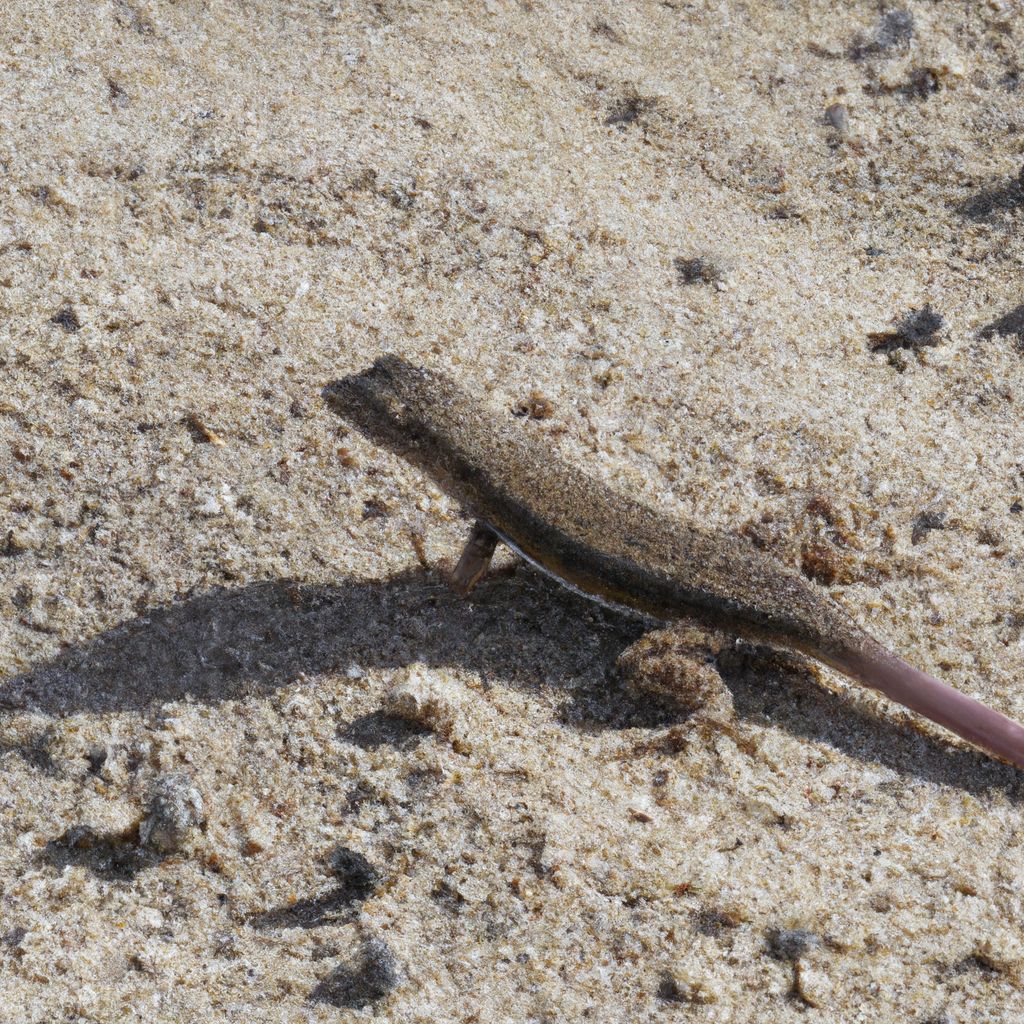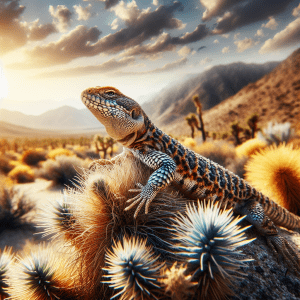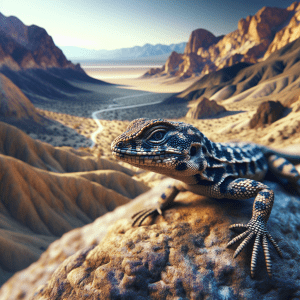Lizards in the Mojave Desert
Have you ever considered the challenges that lizards face in the Mojave Desert? It’s a harsh environment, with scorching temperatures and limited resources. These conditions present a significant challenge for these resilient creatures. Imagine trying to survive in a place where water is scarce, and the sun beats down relentlessly.
One of the main controversies surrounding Mojave Desert lizards is the impact of human activities on their habitat. As human development expands into the desert, lizards are increasingly facing threats such as habitat destruction, pollution, and climate change. These factors can disrupt their natural behavior, breeding patterns, and overall survival.
I remember reading about a study that highlighted how certain lizard populations in the Mojave Desert were declining due to habitat loss caused by urbanization and agriculture. It was a wake-up call for many researchers and conservationists, urging them to take action to protect these unique desert inhabitants.
Understanding these challenges is crucial in order to develop effective conservation strategies to ensure the long-term survival of Mojave Desert lizards. Conservation efforts, such as habitat restoration, protected areas, and education programs, play a vital role in safeguarding these fascinating creatures for future generations to enjoy.
Next time you spot a lizard darting across the desert sand, take a moment to appreciate the resilience and adaptability of these creatures. Consider the challenges they face and the importance of preserving their fragile ecosystem. By raising awareness and taking action to protect Mojave Desert lizards, we can help ensure that these remarkable reptiles continue to thrive in their unique desert home.
Unique Species of Lizards in the Mojave Desert
You won’t believe the amazing variety of lizards that call the Mojave Desert home! From the speedy and elusive zebra-tailed lizard to the iconic desert iguana, each species has its own unique characteristics that make them fascinating to observe. Did you know that the chuckwalla, a large and stocky lizard found in the Mojave Desert, has the ability to inflate itself when threatened by predators? This unique defense mechanism allows the chuckwalla to wedge itself into rock crevices, making it nearly impossible for predators to extract it.
Exploring the different species of lizards in the Mojave Desert is like embarking on a thrilling treasure hunt. Each encounter offers a glimpse into the diverse and wondrous world of desert reptiles. Whether you’re spotting the colorful collared lizard basking in the sun or marveling at the lightning-fast movements of the fringe-toed lizard, there’s always something new and exciting to discover.
As you delve deeper into the realm of Mojave Desert lizards, you’ll be captivated by their intricate patterns, behaviors, and adaptations that enable them to thrive in this harsh environment. Observing these creatures in their natural habitat provides a profound insight into the delicate balance of nature and the resilience of desert life.
Next time you find yourself in the Mojave Desert, keep your eyes peeled for these enchanting creatures. Who knows what hidden wonders you might uncover as you venture into the realm of lizards in this captivating desert landscape.
Characteristics and Behavior of Mojave Desert Lizards
Hey, did you know that lizards in the Mojave Desert have some seriously cool characteristics and behaviors? It’s like they’re the rockstars of the desert animal kingdom! These little reptiles are so fascinating to observe. One interesting fact that blew my mind is that some lizard species in the Mojave Desert have the ability to change color based on their surroundings. How cool is that? It’s like they have their own built-in camouflage gear!
But that’s not all. Mojave Desert lizards are also known for their unique way of moving. Have you ever seen a lizard do push-ups? It might sound like a workout routine, but it’s actually a common behavior among certain lizard species in the desert. They do these push-ups to show dominance or attract a mate. Talk about getting fit and looking for love at the same time!
Another quirky behavior that Mojave Desert lizards exhibit is their tail-waving antics. When feeling threatened or trying to communicate with other lizards, they often wave their tails in a rhythmic motion. It’s like they’re saying, “Hey, I’m here, and I mean business!” This tail-waving behavior adds an element of charm to these already fascinating creatures.
And get this – some Mojave Desert lizards have the ability to detach their tails when faced with a predator. It’s a clever escape strategy that allows the lizard to make a quick getaway while the predator is distracted by the wriggling tail left behind. Talk about a disappearing act worthy of a magician!
So, the next time you’re out exploring the Mojave Desert and spot a lizard, take a moment to appreciate all the incredible characteristics and behaviors that make these little reptiles so captivating. Who knew there was so much more to these creatures than meets the eye? Nature truly is full of surprises!
Adaptations of Lizards to the Harsh Desert Environment
Let me tell you about the fascinating adaptations of lizards in the Mojave Desert. Did you know that these little creatures have some incredible survival techniques up their scaly sleeves? Picture this: a scorching hot desert landscape, with little water and scorching temperatures. Sounds tough, right? Well, Mojave Desert lizards have evolved some pretty cool tricks to thrive in this harsh environment.
One interesting fact is that many Mojave Desert lizards have developed specialized skin that helps them regulate their body temperature. The scales on their skin not only provide protection but also help them retain moisture in the arid desert conditions. Some lizards, like the chuckwalla, can even inflate their bodies to appear larger, deterring predators and reducing heat absorption.
These adaptations are crucial for their survival in the Mojave Desert. Imagine trying to find food and avoid becoming someone else’s lunch in such a challenging environment! Mojave Desert lizards have also adapted their behaviors to cope with the extreme conditions. For example, they are often most active during the cooler parts of the day to avoid overheating.
Now, think about the broader significance of these adaptations. It’s not just about lizards surviving in the desert; it’s a testament to the incredible diversity and resilience of life on our planet. These lizards have found ingenious ways to thrive in a place where many other creatures would struggle to survive.
So, next time you spot a lizard darting across the sandy terrain of the Mojave Desert, take a moment to appreciate the remarkable adaptations that allow these little reptiles to call this harsh environment home. It’s a reminder of the wonders of nature and the endless possibilities of evolution.
Importance of Lizards in the Mojave Desert Ecosystem
Let me share an interesting fact about the importance of lizards in the Mojave Desert ecosystem. Did you know that lizards play a crucial role in maintaining the balance of the desert ecosystem? It’s not just about their cute appearance or fascinating behaviors; these little creatures are actually key players in the web of life in the Mojave Desert.
You see, lizards are an essential part of the food chain in this harsh environment. They are both predators and prey, consuming insects and other small creatures while also serving as a food source for larger predators like birds and snakes. This dynamic interaction helps regulate populations and ensures the survival of various species in the desert.
Beyond their role as food sources, lizards also contribute to the ecosystem through their foraging and hunting activities. By controlling insect populations, they help prevent outbreaks of pests that could otherwise damage plants and disrupt the delicate desert ecosystem. In a way, lizards act as natural pest controllers, keeping the ecosystem in balance without the need for human intervention.
Moreover, lizards play a part in seed dispersal through their movement and consumption of fruits. This activity contributes to the regeneration of plant species in the desert, helping maintain biodiversity and resilience in the face of environmental challenges.
So, the next time you spot a lizard darting across the desert sands, take a moment to appreciate the important role it plays in this unique and fragile ecosystem. These small creatures may seem unassuming, but their presence has far-reaching effects on the Mojave Desert’s biodiversity and overall health. It’s just another reminder of the interconnectedness of all living things in nature.
Tips for Spotting Lizards in the Mojave Desert
Have you ever tried spotting lizards in the Mojave Desert? It’s like a real-life game of hide and seek! Did you know that lizards in this desert have unique adaptations to survive in the harsh environment? For example, the iconic horned lizard, also known as the “horny toad,” has the ability to shoot blood from its eyes as a defense mechanism against predators. Yes, you heard that right – blood from its eyes! It may sound like something out of a horror movie, but it’s a fascinating survival tactic that these lizards have developed over time.
When you’re out exploring the Mojave Desert, keep an eye out for the zebra-tailed lizard, known for its lightning-fast speed, allowing it to swiftly escape danger. These lizards are masters of camouflage, blending seamlessly into the desert landscape with their striped tails that resemble the stripes of a zebra. It’s incredible to witness how these creatures have evolved to thrive in such extreme conditions.
Spotting lizards in the Mojave Desert can be a thrilling experience, but it requires patience and a keen eye. Look for them basking in the sun on rocks or scurrying across sandy terrain. Remember, these fascinating creatures play a vital role in the desert ecosystem, controlling insect populations and serving as prey for larger predators.
Next time you’re in the Mojave Desert, take a moment to appreciate the beauty and resilience of the lizards that call this arid landscape home. Who knows, you might just witness one of nature’s most incredible adaptations in action!
Conservation Efforts to Protect Mojave Desert Lizards
Let me tell you about the fascinating world of conservation efforts to protect Mojave Desert lizards. It’s not just about saving these scaly creatures; it’s about preserving the delicate balance of the desert ecosystem.
Did you know that Mojave Desert lizards face numerous threats to their survival? From habitat loss due to urban development to climate change impacting their food sources, these resilient reptiles are facing challenges on multiple fronts. This is where conservation efforts play a crucial role in safeguarding their populations and ensuring their continued presence in the desert landscape.
One of the key strategies in protecting Mojave Desert lizards is the establishment of protected areas and conservation reserves. By designating specific areas as sanctuaries for these reptiles, conservationists can limit human disturbances and create safe havens where lizards can thrive undisturbed. These efforts not only benefit the lizards but also help maintain the overall biodiversity of the desert ecosystem.
Conservationists also work on raising awareness about the importance of these reptiles and their role in the ecosystem. By educating the public about the value of Mojave Desert lizards and the threats they face, conservationists hope to garner support for conservation initiatives and inspire people to take action to protect these unique creatures.
So, the next time you come across a lizard basking in the sun in the Mojave Desert, take a moment to appreciate the beauty and significance of these reptiles. Consider how your actions, whether big or small, can contribute to the conservation efforts aimed at safeguarding these fascinating creatures for future generations to enjoy. After all, the conservation of Mojave Desert lizards is not just about saving a species; it’s about preserving a piece of the desert’s natural heritage.
Popular Lizard Watching Locations in the Mojave Desert
Did you know that the Mojave Desert is home to a diverse array of lizard species, each with its own unique characteristics and behaviors? From the speedy zebra-tailed lizard to the spiky horned lizard, there’s so much to discover when it comes to lizard watching in this arid landscape.
When exploring popular lizard watching locations in the Mojave Desert, you’ll be amazed by the variety of habitats that these fascinating creatures call home. From rocky outcrops to sandy dunes, lizards have adapted to thrive in the harsh desert environment in remarkable ways.
One interesting fact about lizard watching in the Mojave Desert is that different species of lizards have specific preferences when it comes to their habitat. For example, the western whiptail lizard can often be found darting across open areas, while the chuckwalla prefers rocky crevices for shelter.
As you venture out to spot lizards in the Mojave Desert, keep an eye out for these unique habitats and observe how each species interacts with its surroundings. By paying attention to these details, you’ll not only enhance your lizard watching experience but also gain a deeper appreciation for the importance of preserving their natural habitats.
So, next time you find yourself in the Mojave Desert, take a moment to soak in the beauty of the landscape and keep an eye out for these fascinating creatures. Who knows, you might just spot a lizard basking in the sun or scurrying across the desert floor, adding a touch of wonder to your desert adventure.
Fun Facts About Lizards in the Mojave Desert
You know, when you stop to think about it, the presence of lizards in the Mojave Desert goes beyond just their fascinating appearance and behavior. These little creatures actually play a significant role in the delicate balance of the desert ecosystem. It’s like they’re the unsung heroes of the desert, quietly working behind the scenes to keep things in check.
Picture this: the Mojave Desert is a harsh environment, with scorching temperatures and limited resources. Yet, lizards have managed to adapt and thrive in this challenging landscape. Their presence not only adds to the biodiversity of the region but also indicates the health of the ecosystem as a whole. If lizards are doing well, it’s a good sign that the desert environment is relatively stable.
But here’s the thing – lizards are facing threats from various factors like habitat destruction, climate change, and human interference. If their populations decline, it could have ripple effects throughout the entire desert ecosystem. Predators that rely on lizards as a food source may struggle to find enough food, disrupting the natural food chain. This, in turn, could impact other plant and animal species in the desert.
So, appreciating the diversity of lizards in the Mojave Desert isn’t just about admiring their unique features or observing their behavior. It’s about recognizing their crucial role in maintaining the ecological balance of this arid landscape. By understanding and protecting these small but mighty creatures, we are also safeguarding the fragile ecosystem they call home. Next time you spot a lizard darting across the desert sands, take a moment to consider the bigger picture – their presence signifies a thriving ecosystem, one that we should all strive to preserve for future generations.
Appreciating the Diversity of Lizards in the Mojave Desert
Hey, have you ever stopped to think about the incredible diversity of lizards in the Mojave Desert? It’s like a whole other world out there, teeming with these fascinating creatures that have adapted in such unique ways to survive in the harsh desert environment. Let me tell you, it’s truly mind-blowing.
When you take a closer look at the lizards in the Mojave Desert, it’s like peering into a miniature universe filled with all sorts of characters. From the speedy zebra-tailed lizards darting across the sandy terrain to the regal chuckwallas basking in the sun, each species has its own charm and quirks that make them stand out.
One of the most intriguing things about these desert dwellers is their incredible adaptations. Did you know that some lizards in the Mojave Desert can go for months without water, relying on the moisture from their food and the dew on plants to survive? It’s like they have their own built-in water conservation system, which is pretty impressive if you ask me.
And let’s not forget about the role these lizards play in the delicate ecosystem of the Mojave Desert. They’re not just there for show; they actually contribute to the balance of the desert by controlling insect populations and serving as prey for larger predators. It’s like they’re the unsung heroes of the desert, quietly going about their business and keeping the ecosystem in check.
So, the next time you find yourself wandering through the Mojave Desert, keep an eye out for these amazing creatures. Who knows, you might just stumble upon a hidden world filled with lizards going about their daily lives, each with a story to tell. It’s a reminder of the beauty and complexity of nature, right in our own backyard.




